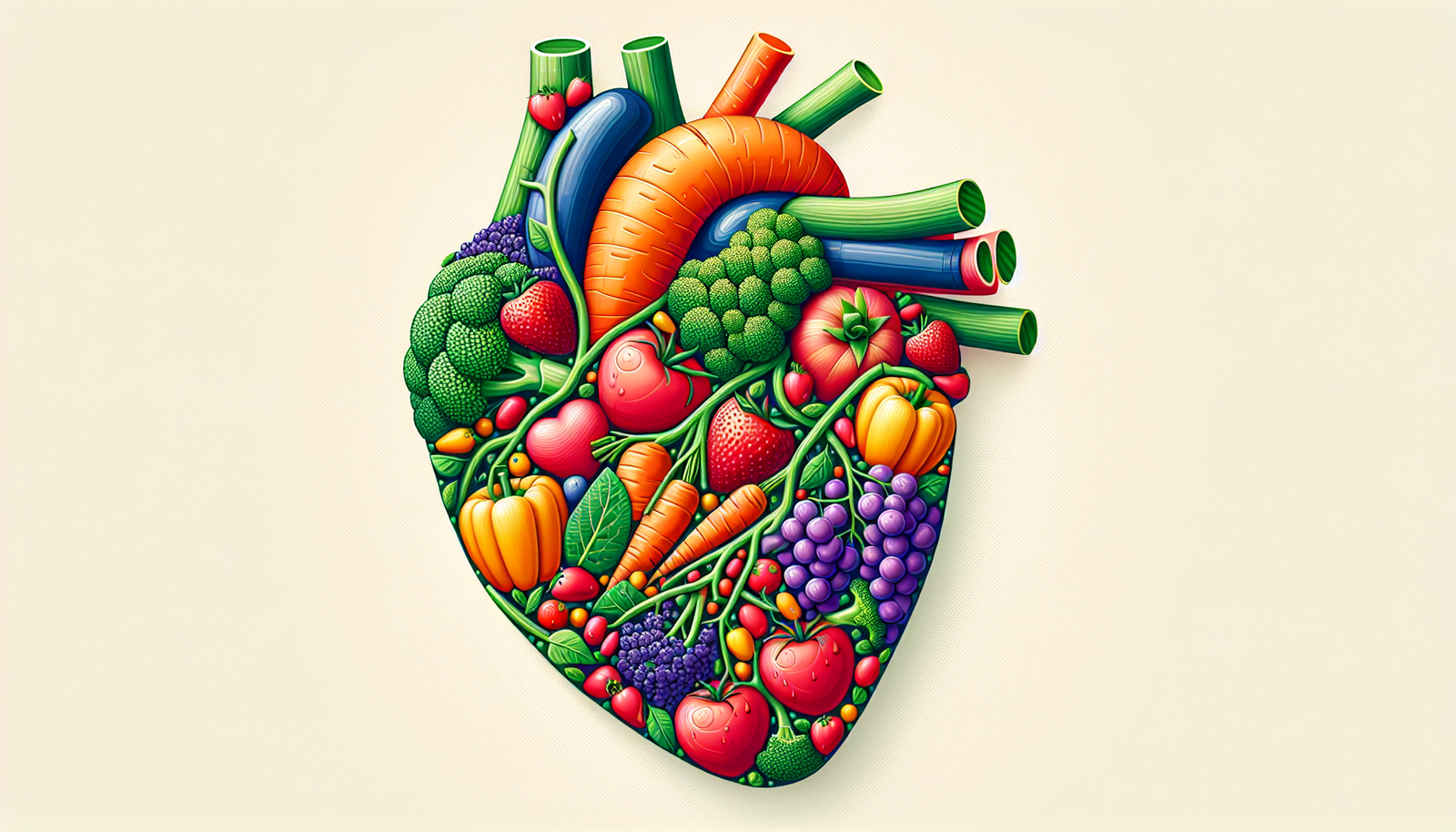Understanding LDL and HDL Cholesterol: What You Need to Know
Understanding LDL and HDL Cholesterol: What You Need to Know
1. What is Cholesterol?
Cholesterol is a waxy, fat-like substance that is vital for various bodily functions. It is essential for the formation of cell membranes, production of hormones, and synthesis of vitamin D. Cholesterol travels through the bloodstream, bound to proteins, forming complexes known as lipoproteins. The two main types of lipoproteins are Low-Density Lipoprotein (LDL) and High-Density Lipoprotein (HDL).
2. The Role of LDL Cholesterol
Low-Density Lipoprotein (LDL) is often referred to as "bad" cholesterol due to its association with cardiovascular diseases. Elevated levels of LDL cholesterol can lead to plaque buildup in the arteries, known as atherosclerosis, which can increase the risk of heart attack and stroke.
2.1. Mechanics of LDL
LDL particles transport cholesterol from the liver to the cells throughout the body, fulfilling its role in cellular structure and function. However, when there is an excess of LDL cholesterol, it gets deposited in the arterial walls, leading to narrowing and hardening of the arteries.
2.2. Factors Contributing to High LDL Levels
Several factors contribute to elevated LDL levels:
- Diet: Consuming saturated fats, trans fats, and dietary cholesterol can raise LDL levels. Foods like red meat, full-fat dairy, and processed foods can be particularly detrimental.
- Genetics: Familial hypercholesterolemia is a genetic condition that results in extremely high LDL levels.
- Lifestyle Choices: Lack of physical activity, obesity, and smoking can contribute to higher LDL cholesterol levels.
2.3. Optimal LDL Levels
Health guidelines recommend that LDL levels should be below 100 mg/dL for optimal heart health. Levels between 100 and 129 mg/dL are considered near optimal, while levels from 130 mg/dL and above indicate increasing risk for cardiovascular events.
3. The Role of HDL Cholesterol
High-Density Lipoprotein (HDL), known as "good" cholesterol, helps to mitigate cardiovascular risk. Unlike LDL, HDL cholesterol carries cholesterol away from the arteries and back to the liver, where it can be removed from the body or repurposed.
3.1. Mechanics of HDL
HDL particles exert a protective effect on the cardiovascular system. They help reduce inflammation and oxidative stress in the blood vessels, facilitating the reverse transport of cholesterol and promoting overall vascular health.
3.2. Factors Influencing HDL Levels
Several factors can influence HDL levels positively:
- Healthy Fats: Consuming unsaturated fats present in fish, avocados, nuts, and olive oil can increase HDL levels.
- Exercise: Regular physical activity is associated with higher HDL levels.
- Moderate Alcohol Consumption: Some studies suggest that moderate intake of alcohol, especially red wine, may raise HDL levels.
3.3. Optimal HDL Levels
Aim for HDL levels of 60 mg/dL or above to benefit from its protective effects against heart disease. Levels below 40 mg/dL can increase the risk of cardiovascular problems.
4. Understanding the Ratio of LDL to HDL
The balance between LDL and HDL cholesterol is crucial. A higher ratio of LDL to HDL can indicate a greater likelihood of heart disease. Health experts recommend focusing not just on lowering LDL but also on raising HDL cholesterol for optimal cardiovascular health.
4.1. Calculating the Ratio
To calculate the ratio, divide total cholesterol by HDL cholesterol. Ideal ratios are considered to be:
- Less than 3.5: Optimal ratio.
- 3.5 to 4.0: Borderline risk.
- Greater than 4.0: High risk for heart disease.
5. How to Manage Cholesterol Levels
Managing cholesterol involves a multi-faceted approach combining dietary changes, physical activity, and, where necessary, medication.
5.1. Dietary Changes
- Fruits and Vegetables: Rich in fiber, antioxidants, and phytosterols, they help lower LDL and raise HDL.
- Whole Grains: Foods such as oats, barley, and quinoa can help reduce cholesterol levels.
- Legumes and Nuts: Beans, lentils, almonds, and walnuts can enhance heart health.
- Fish: Fatty fish like salmon and mackerel provide omega-3 fatty acids, which can positively impact cholesterol levels.
5.2. Increased Physical Activity
Engaging in at least 150 minutes of moderate-intensity aerobic exercise weekly can enhance HDL levels and lower LDL levels. Activities such as brisk walking, cycling, or swimming are effective.
5.3. Maintaining a Healthy Weight
Losing weight can significantly improve cholesterol numbers. Even a modest weight loss of 5-10% can have a substantial impact on reducing LDL and increasing HDL cholesterol.
5.4. Quitting Smoking
Smoking cessation positively affects HDL cholesterol levels. Additionally, the absence of smoking improves overall cardiovascular health.
5.5. Medication
In some cases, lifestyle changes may not be sufficient to manage cholesterol levels. Statins and other cholesterol-lowering medications may be prescribed by healthcare providers in conjunction with lifestyle modifications to manage high cholesterol.
6. Regular Screening and Testing
Regular cholesterol screening is essential for understanding one’s cholesterol levels and the overall risk for heart disease. Adults should begin cholesterol screening at age 20 and continue every 4-6 years unless advised otherwise by a healthcare provider.
6.1. Types of Tests
- Lipid Panel: This blood test measures total cholesterol, LDL, HDL, and triglycerides.
- Non-Fasting vs. Fasting Tests: Recent guidelines indicate that non-fasting tests may be sufficient for screening, although fasting lipid panels provide the most accurate measurements.
7. Understanding Triglycerides
While LDL and HDL cholesterol are critical, triglycerides—another type of lipid—play a role in overall cardiovascular health. Elevated triglyceride levels often accompany high LDL levels and low HDL levels, contributing to heart disease risk.
7.1. Causes of High Triglycerides
- Obesity or overweight: Excess body weight tends to increase triglyceride levels.
- High Sugar Diet: Diets high in refined sugars and carbohydrates can elevate triglycerides.
- Alcohol Consumption: Excessive alcohol intake can raise triglyceride levels.
7.2. Measuring Triglycerides
Normal triglyceride levels should be less than 150 mg/dL. Levels above this threshold can indicate metabolic syndrome, increasing the risk of heart disease and diabetes.
8. The Psychological Impact of Cholesterol Management
Managing cholesterol levels can have psychological effects, including anxiety and stress from worrying about one’s health. Educating oneself about cholesterol and taking practical steps towards management can alleviate these concerns.
8.1. Building a Support System
Engaging family and friends or participating in support groups can facilitate sustained lifestyle changes and provide motivation in cholesterol management.
8.2. Monitoring Progress
Keeping track of dietary changes, exercise routines, and weight can offer a sense of accomplishment and encourage continued efforts in managing cholesterol levels.
By understanding LDL and HDL cholesterol—including their functions, the factors affecting their levels, and the methods to manage them—individuals can take proactive steps towards maintaining heart health and reducing the risk of cardiovascular diseases.








